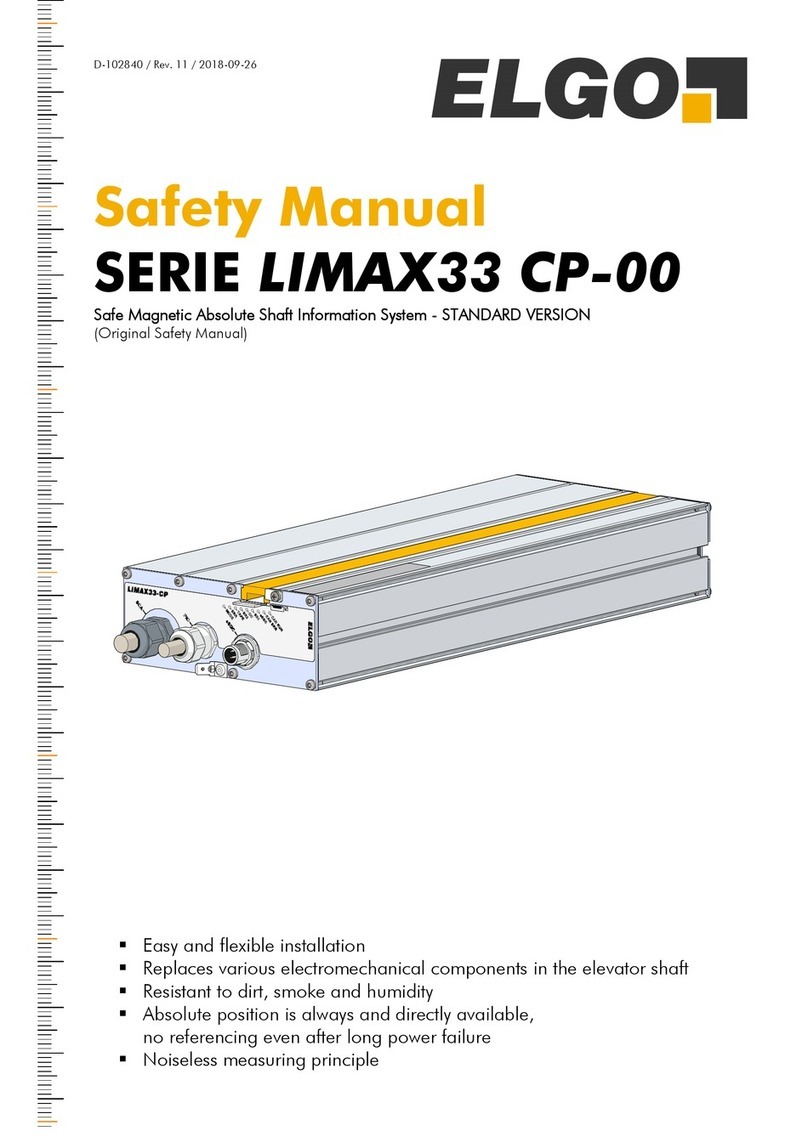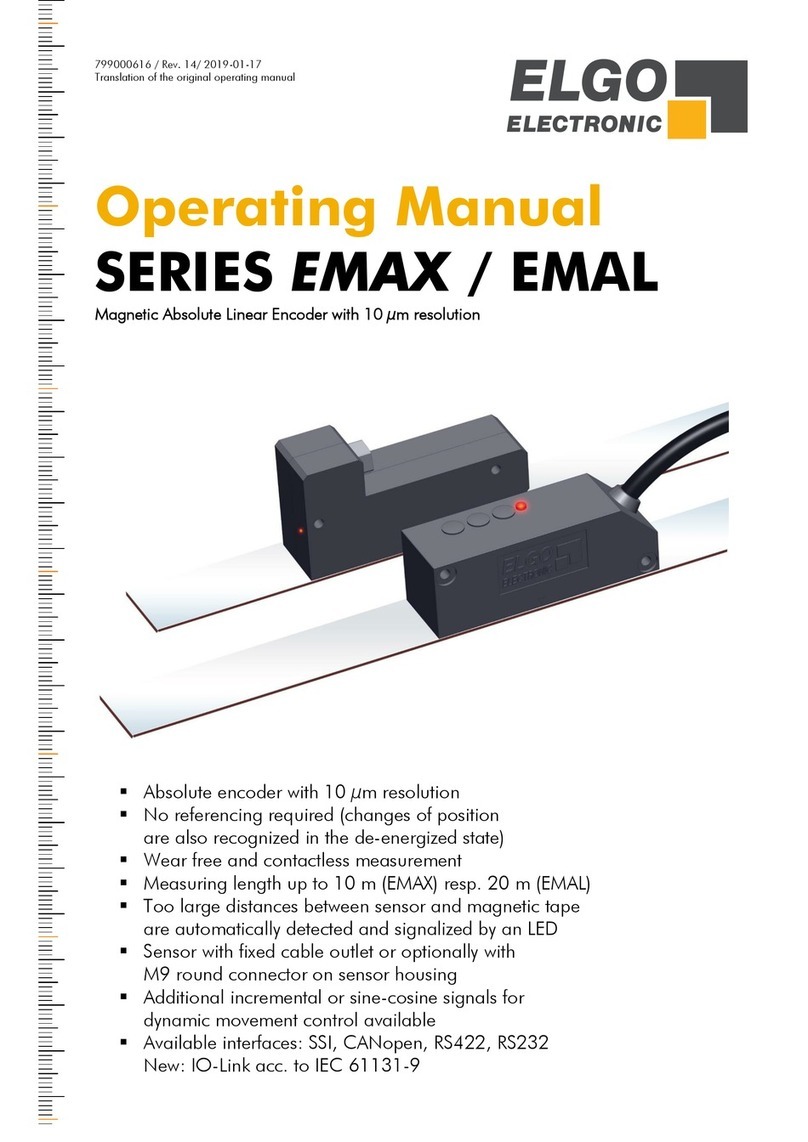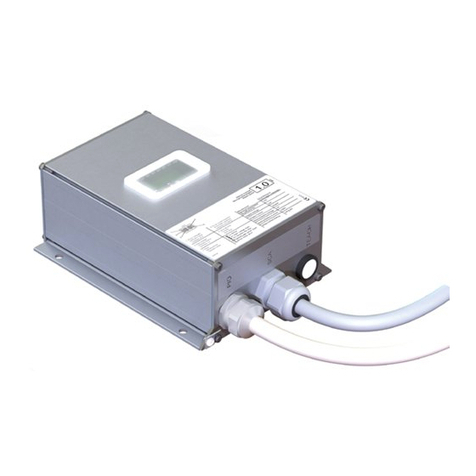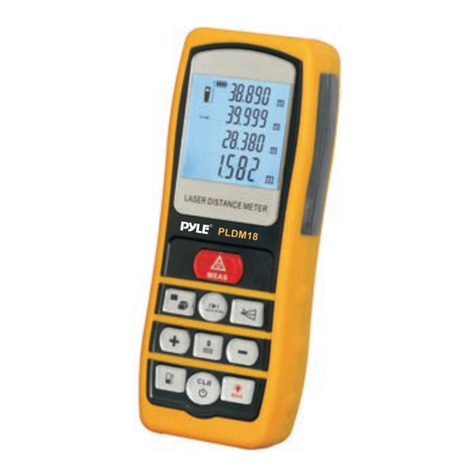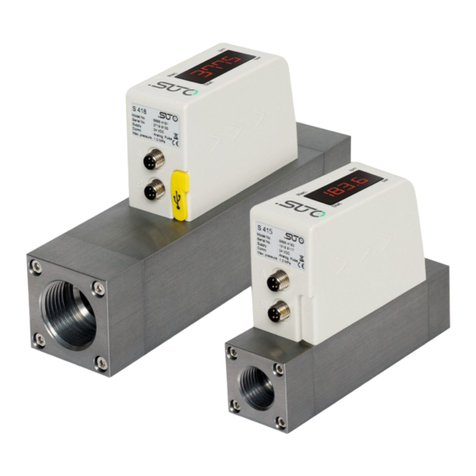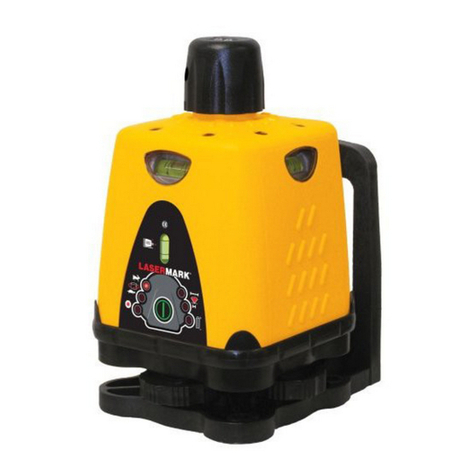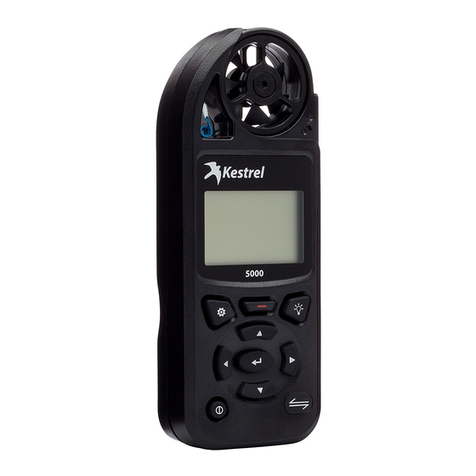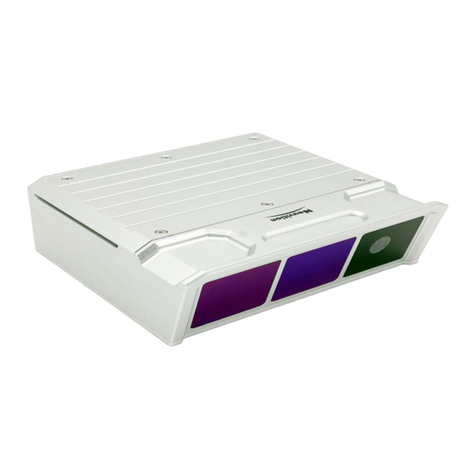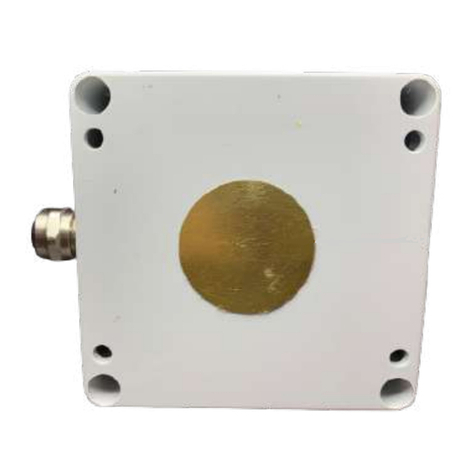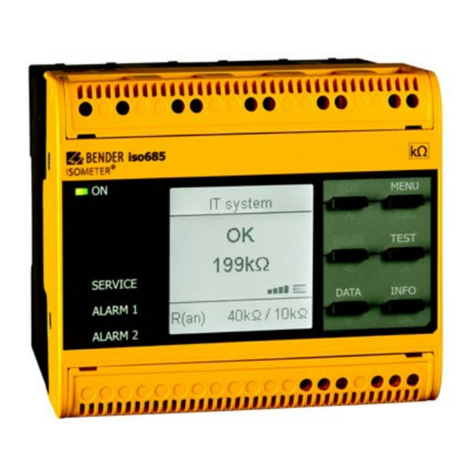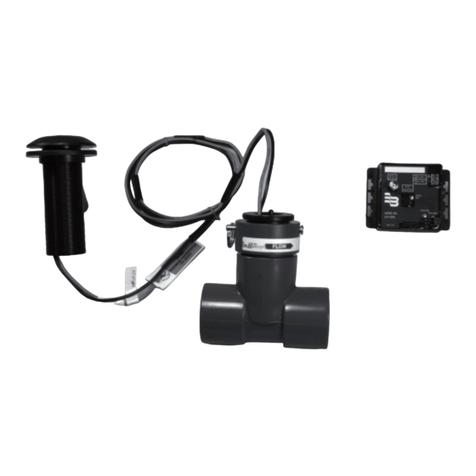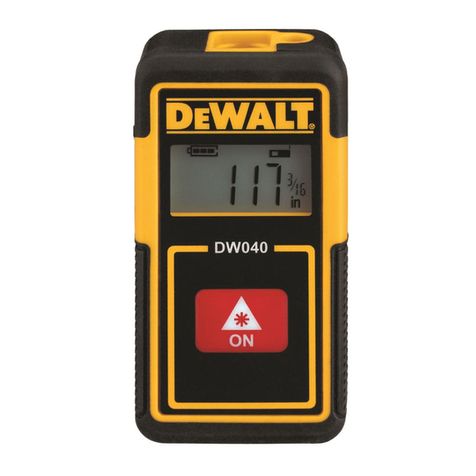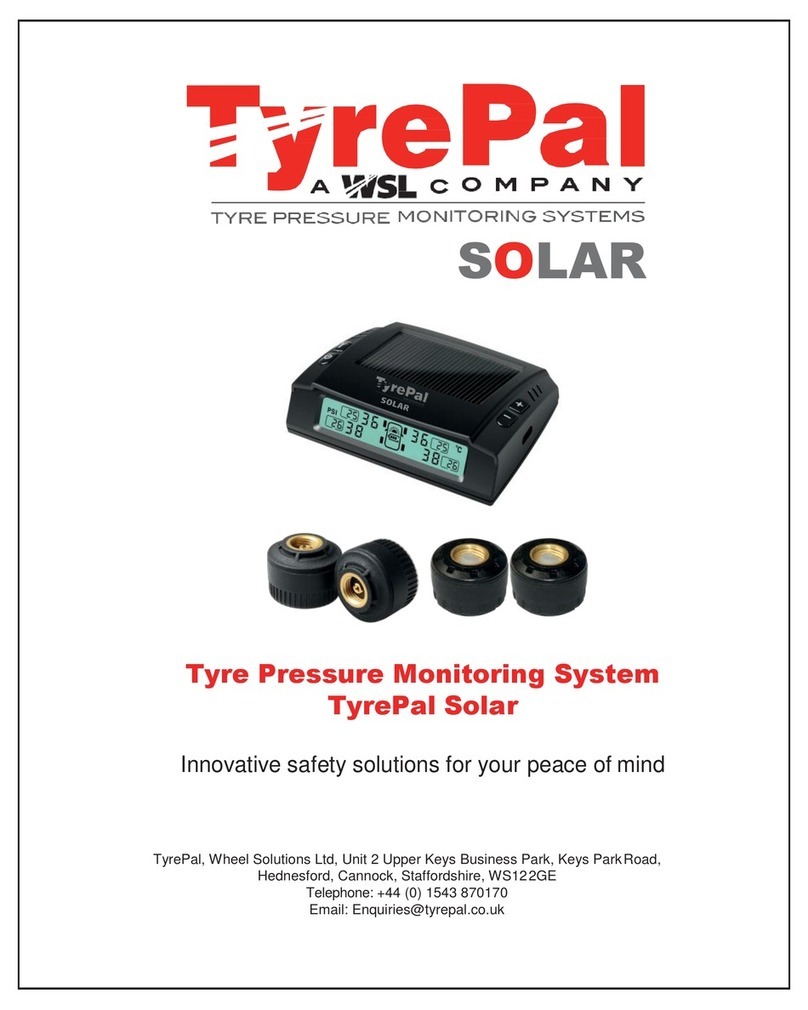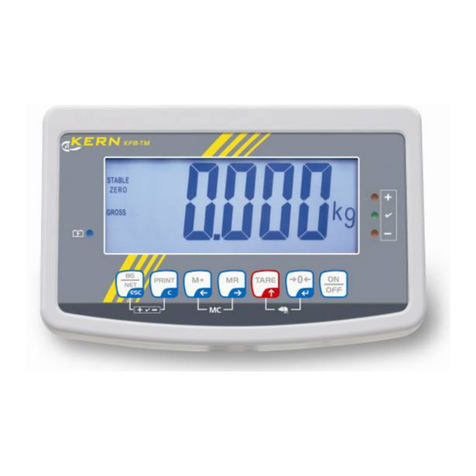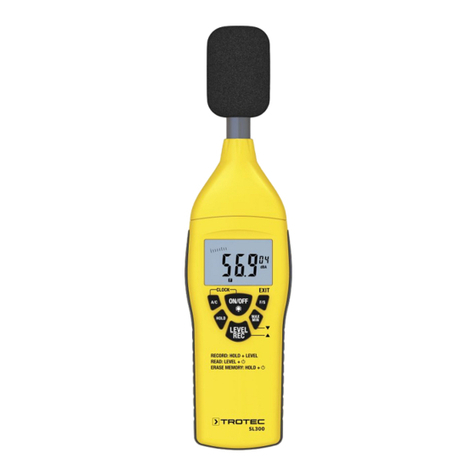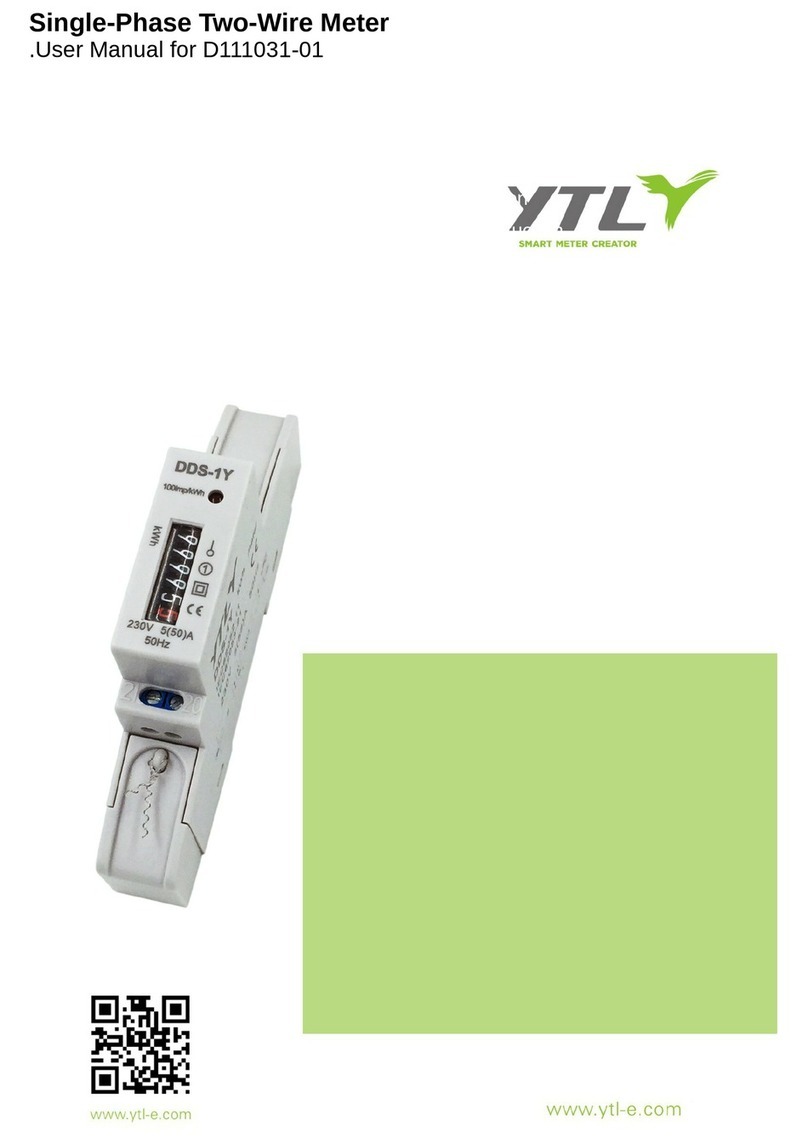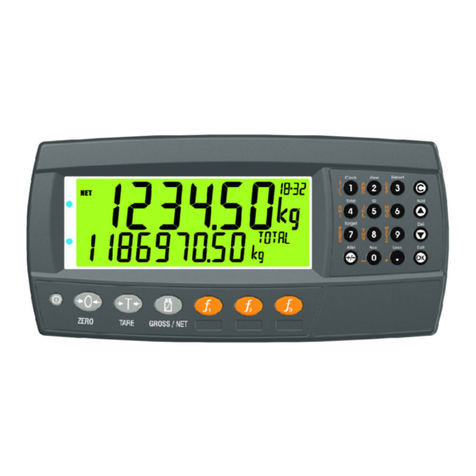Elgo LIMAX1M Series User manual

Operating Manual
SERIE LIMAX1M
Magnetic, Pseudo-Absolute Shaft Information System
(Translation of the original operating manual)
Absolute measurement for hoisting heights up to 90 m
Auto-referencing: Absolute position is detected after 240 mm
Resolution: 62.5 / 125 / 250 / 500 or 1000 µm
Insensitive to smoke, dirt and moisture
Operating speed up to 4 m/s (higher on request)
Interfaces: CANopen DS417, CANopen DS406 or USB
On request: RS485, RS422 or SSI
Simple and flexible mounting options
Vertical installation of the magnetic tape
Wear-free, contactless and noiseless measuring principle
D-105020 / Rev. 2 / 2020-02-06

Contents
- 3 -
1Contents
1Contents ..................................................................................................... 3
2List of Figures............................................................................................. 4
3List of Tables .............................................................................................. 4
4General...................................................................................................... 5
4.1 Information Operating Manual ........................................................................................... 5
4.2 Explanation of Symbols...................................................................................................... 5
4.3 Referrals .......................................................................................................................... 6
4.4 Statement of Warranties..................................................................................................... 6
4.5 Demounting and Disposal.................................................................................................. 6
5Safety ......................................................................................................... 7
5.1 General Causes of Risk ..................................................................................................... 7
5.2 Personal Protective Equipment ............................................................................................ 7
5.3 Conventional Use ............................................................................................................. 8
6Transport and Storage............................................................................... 9
6.1 Safety Instructions for Transport, Unpacking and Loading ....................................................... 9
6.2 Handling of Packaging Material.......................................................................................... 9
6.3 Inspection of Transport ...................................................................................................... 9
6.4 Storage ........................................................................................................................... 9
7Product Features ...................................................................................... 10
7.1 Functional principle......................................................................................................... 10
7.2 Structure of the Sensor..................................................................................................... 10
8Technical Data ......................................................................................... 11
8.1 Identification .................................................................................................................. 11
8.2 Dimensions Sensor.......................................................................................................... 11
8.3 Dimensions Mounting Angle (Accessories) .......................................................................... 12
8.4 Technical Data Sensor ..................................................................................................... 13
8.5 Technical Data Magnetic Tape ......................................................................................... 14
9Installation and First Start-Up ................................................................. 15
9.1 Operating Area .............................................................................................................. 15
9.2 Installation of Sensor and Magnetic Tape ........................................................................... 16
9.3 Mounting the Sensor ....................................................................................................... 17
9.4 Installation of the Magnetic Tape ...................................................................................... 18
9.5 Pseudo-absolute Measuring Principle................................................................................. 24
9.6 Referencing.................................................................................................................... 24
10 LEDs (Operating States and Messages) ................................................... 25
11 Interfaces ................................................................................................. 26
11.1 CAN Interface ................................................................................................................ 26
11.2 USB Interface ................................................................................................................. 30
11.3 SSI Interface ................................................................................................................... 30

Contents
- 4 -
11.4 RS485 or RS422 Interface................................................................................................ 30
12 Connections.............................................................................................. 31
12.1 Pin Assignment of the RJ45 Socket .................................................................................... 31
13 Disturbances ............................................................................................ 33
13.1 Fault Clearance.............................................................................................................. 33
13.2 Re-start after Fault Clearance ........................................................................................... 33
13.3 Maintenance .................................................................................................................. 33
13.4 Cleaning ....................................................................................................................... 33
14 Type Designation ..................................................................................... 34
14.1 Accessories .................................................................................................................... 34
15 Index ........................................................................................................ 35
2List of Figures
Figure 1: Structure of the LIMAX1M sensor ................................................................................................ 10
Figure 2: Type Label ............................................................................................................................... 11
Figure 3: Dimensions of the Sensor .......................................................................................................... 11
Figure 4: Dimensions of the Mounting Angle............................................................................................. 12
Figure 5: Magnetic Tape: Structure and Dimensions .................................................................................. 14
Figure 6: Installation with tension weight ................................................................................................... 16
Figure 7: Installation with tension spring ................................................................................................... 16
Figure 8: Mounting Angle (accessorial part) .............................................................................................. 17
Figure 9: Assessment of the magnetic tape offset ....................................................................................... 19
Figure 10: Correct direction of the magnetic tape...................................................................................... 20
Figure 11: Distance and orientation of the tape with reference to the sensor ................................................ 20
Figure 12: Connecting the magnetic tape to the sensor.............................................................................. 21
Figure 13: Assessment of the tape guide rail in the sensor - twisted magnetic tape ....................................... 22
Figure 14: Assessment of the tape guide rail in the sensor - skewed magnetic tape....................................... 22
Figure 15: Final inspection check ............................................................................................................. 23
Figure 16: LEDs for status messages......................................................................................................... 25
Figure 17: Protocol DS417...................................................................................................................... 26
Figure 18: Protocol DS406...................................................................................................................... 26
Figure 19: Saving Parameters .................................................................................................................. 27
Figure 20: Change to Operational Mode ................................................................................................. 27
Figure 21: Change to Pre-operational Mode............................................................................................. 27
Figure 22: Change to Stopped Mode ....................................................................................................... 28
Figure 23: Change to LSS Configuration Mode ......................................................................................... 28
Figure 24: Save parameters in the LSS Mode ............................................................................................ 28
Figure 25: Bit rate setting ........................................................................................................................ 29
Figure 26: Node ID setting ...................................................................................................................... 29
Figure 27: SSI data protocol .................................................................................................................... 30
3List of Tables
Table 1: Configuration CANopen DS417 ................................................................................................. 26
Table 2: Configuration CANopen DS406 ................................................................................................. 26
Table 3: RJ45 pin assignment CAN interface............................................................................................. 31
Table 4: RJ45 pin assignment SSI interface ............................................................................................... 31
Table 5: RJ45 pin assignment RS485 interface .......................................................................................... 31
Table 6: RJ45 pin assignment RS422 interface .......................................................................................... 32
Table 7: Accessories for LIMAX1M............................................................................................................ 34

General
- 5 -
4General
4.1 Information Operating Manual
This manual contains important information regarding the handling of the device. For your own safety and op-
erational safety, please observe all safety warnings and instructions.
Precondition for safe operation is the compliance with the specified safety and handling instructions. Moreover,
the existing local accident prevention regulations and the general safety rules at the site of operation have to be
observed.
Please read the operating manual carefully before starting to work with the device! It is part of the product and
should be kept close to the device and accessible for the staff at any time. The illustrations in the manual are for
better demonstration of the facts. They are not necessarily to scale and can slightly differ from the actual design.
4.2 Explanation of Symbols
Special notes in this manual are characterized by symbols. The notes are introduced by signal words which ex-
press the magnitude of danger. Please follow this advice and act carefully in order to avoid accidents and dam-
age and injuries.
Warning notes:
DANGER!
This symbol in connection with the signal word “Danger” indicates an immediate danger for
the life and health of persons. Failure to heed these instructions can result in serious damage
to health and even fatal injury.
WARNING!
This symbol in connection with the word „Warning” means a possibly impending danger for
the life and health of persons. Failure to heed these instructions can result in serious damage
to health and even fatal injury.
CAUTION!
This symbol in connection with the signal word “Caution” indicates a possibly dangerous
situation. Failure to heed these instructions can lead to injuries or damage of property.
Special safety instructions:
DANGER!
This symbol in connection with the signal word “Danger” indicates an immediate danger for
the life and health of persons due to voltage. Failure to heed these instructions can result in
serious damage to health and even fatal injury. The operations may only be carried out by a
professional electrician.
Tips and recommendations:
NOTE!
…points out useful tips and recommendations as well as information for an efficient and
trouble-free operation.
References:
(1.2) Marks a reference to chapter 1.2 of this manual.
(DOC 3.4) Marks a reference to chapter 3.4 of the document DOC.

General
- 6 -
4.3 Referrals
/LIMAX-MKF-MI/ Mounting instructions for the Magnetic Tape Installation Kit LIMAX MKF
https://www.elgo.de/fileadmin/user_upload/pdf/manual/lift/LIMAX-MKF-MI-DE.pdf
/LIMAX-RMS-000-MI/ Mounting instructions for the Magnetic Tape Installation Kits LIMAX RMS & LIMAX RMS90
https://www.elgo.de/fileadmin/user_upload/pdf/manual/lift/LIMAX-RMS-000-MI-DEF.pdf
/LIMAX-S-RMS-000-MI/ Mounting instructions for the Magnetic Tape Installation Kit LIMAX S-RMS
https://www.elgo.de/fileadmin/user_upload/pdf/manual/lift/LIMAX-S-RMS-000-MI-DEF.pdf
/LIMAX-S-RMS2-000-MI/ Mounting instructions for the Magnetic Tape Installation Kit LIMAX S-RMS2
https://www.elgo.de/fileadmin/user_upload/pdf/manual/lift/LIMAX-S-RMS2-000-MI-DEF.pdf
4.4 Statement of Warranties
The statement of warranties is enclosed separately in the sales documents.
Guarantee:
The producer guarantees the functional capability of the process engineering and the selected parameters.
The period of warranty is one year and begins with the date of delivery.
4.5 Demounting and Disposal
Unless acceptance and disposal of returned goods are agreed upon, demount the device considering the safety
instructions of this manual and dispose it with respect to the environment.
Before demounting:
Disconnect the power supply and secure against re-start. Then disconnect the supply lines physically and dis-
charge remaining energy. Remove operational supplies and other material.
Disposal:
Recycle the decomposed elements:
Metal components in scrap metal
Electronic components in electronic scrap
Recycle plastic components
Dispose the remaining components according to their material consistence
CAUTION!
Wrong disposal causes environmental damages! Electronic scrap, electronic components,
lubricants and other auxiliary materials are subject to special refuse and can only be disposed
by authorized specialists!
Local authorities and waste management facilities provide information about environmentally sound disposal.

Safety
- 7 -
5Safety
CAUTION!
Please read the operating manual carefully, before using the device! Observe the installation
instructions! Only start up the device if you have understood the operating manual.
The operating company is obliged to take appropriate safety measure.
The initial operation may only be performed by qualified and trained staff.
Selection and installation of the devices as well as their embedding into the controlling system
require qualified knowledge of the applicable laws and normative requirements on the part of
the machine manufacturer.
5.1 General Causes of Risk
This chapter gives an overview of all important safety aspects to guarantee an optimal protection of employees
and a safe and trouble-free operation. Non-observance of the instructions mentioned in this operating manual
can result in hazardous situations.
5.2 Personal Protective Equipment
Employees have to wear protective clothing during the installation of the device to minimize danger of health.
Therefore: Change into protective clothing before performing the works and wear them throughout the process.
Additionally observe the labels regarding protective clothing in the operating area.
Protective clothing:
PROTECTIVE CLOTHING
… is close-fitting working clothing with light tear strength, tight sleeves and without distant
parts. It serves preliminarily for protection against being gripped by flexible machine parts.
Do not wear rings, necklaces or other jewelry.
PROTECTIVE GLOVES
…for protecting the hands against abrasion, wear and other injury of the skin.
PROTECTIVE HELMET
…for protection against injuries of the head.

Safety
- 8 -
5.3 Conventional Use
The product described in this manual was developed to execute safety-related functions as a part of an entire
assembly or machine. It is the responsibility of the manufacturer of a machine or installation to ensure the prop-
er operation of the system. The ELGO-device is conceived only for the intended use described in this manual.
The ELGO length measuring system LIMAX1M serves only to measure linear positions
CAUTION!
Danger through non-conventional use!
Non-intended use and non-observance of this operating manual can lead to dangerous
situations.
Therefore:
Only use the device as described
Strictly follow the instructions of this manual
Avoid in particular:
Remodeling, refitting or changing of the construction or single components with
the intention to alter the functionality or scope of the device.
Claims resulting from damages due to non-conventional use are not possible.
Only the operator is liable for damages caused by non-conventional use.

Transport and Storage
- 9 -
6Transport and Storage
6.1 Safety Instructions for Transport, Unpacking and Loading
CAUTION!
Transport the package (box, palette etc.) professionally. Do not throw, hit or fold it.
6.2 Handling of Packaging Material
Notes for proper disposal: 4.5
6.3 Inspection of Transport
Check the delivery immediately after the receipt for completeness and transport damage.
In case of externally recognizable transport damages:
Do not accept the delivery or only accept under reserve.
Note the extent of damages on the transportation documents or delivery note.
File complaint immediately.
NOTE!
Claim any damage immediately after recognizing it. The claims for damage must be filed
in the lawful reclaim periods.
6.4 Storage
Store the device only under the following conditions:
Do not store outside
Keep dry and dust-free
Do not expose to aggressive media
Protect from direct sun light
Avoid mechanical shocks
Storage temperature (8) needs to be observed
Relative humidity (8) must not be exceeded
Inspect packages regularly if stored for an extensive period of time (>3 months)

Product Features
- 10 -
7Product Features
Due to its essential advantages, the pseudo-absolute shaft information system LIMAX1M represents a particularly
inexpensive, insensitive and easy to install alternative to conventional shaft information systems. The specification
“M”in the type designation stands for “Miniature” and means the smallest sensor design of the LIMAX series.
Due to its compact design, LIMAX1M requires very little space and is therefore ideal for retrofitting and modern-
izing existing elevator systems.
During commissioning a one-time referencing is required, which must be requested by the lift control (see sec-
tion 9.6). After that LIMAX1M is auto-referencing, i.e. the system automatically detects the absolute position
after a moving distance of 240 mm (see 9.5 Pseudo-Absolute Measuring Principle).
LIMAX1M is able to cover hoisting heights of up to 90 meters at operating speeds of up to 4 m/s.
Compared to other shaft information systems, the LIMAX1M is characterized by an exceptionally low price. Flexi-
ble mounting options ensure simple and quick installation during the initial installation or when the measuring
system needs to be replaced.
7.1 Functional Principle
The magnetic tape AB20-80-10-1-R-D-15-BK80 carries the unique positioning information as a magnetic code.
It is installed free hanging in the elevator shaft by use of a mounting kit. The sensor head is mounted to the ele-
vator car. While the actual measurement is contactless the tape must be kept within a maximum distance to the
sensor head. Therefore, the tape is guided along the sensor by use of the polymer tape guide which is an inte-
gral component of the sensor head.
The magnetic measurement principle is extremely robust. Dust, dirt and humidity do not affect the measurement
in any way. Also, smoke and even higher temperatures have no influence on the measuring quality. Further the
tape is robust enough to withstand the sometimes-harsh conditions in elevator shafts.
7.2 Structure of the Sensor
The LIMAX1M sensor consists of the following components:
Sensor housing with integrated mounting holes
RJ45 socket for CAN or mini-USB socket for USB interface (according to order specification)
Guidance made of sliding plastic (keeps the magnetic tape at a defined distance from the sensor).
Triple LED line for status messages and operating states.
Figure 1: Structure of the LIMAX1M sensor
RJ45 slot
Status LEDs
Mini USB
Mounting holes Magnetic tape guidance

Technical Data
- 11 -
XXXXXX XX XXXX. XXXXXXXXX
MADE IN LIECHTENSTEIN
HW: . - / SW: v . bXX X X X X X
/ /
XXX
LIMAX1M-00-CON-1000-CO1T-RJ45
8Technical Data
8.1 Identification
The type label serves for the identification of the unit. It is located on the housing
of the sensor and gives the exact type designation (=order reference) with the
corresponding part number. Furthermore, the type label contains a unique,
traceable device number, the production date as well as the hardware and soft-
ware versions. When corresponding with ELGO always indicate this data.
8.2 Dimensions Sensor
Figure 3: Dimensions of the Sensor
30
60.4
68
82
40 (42)
Underside
Top side
Figure 2: Type Label

Technical Data
- 13 -
8.4 Technical Data Sensor
LIMAX1M (Standard Version)
Mechanical Data
Measuring principle
pseudo-absolute
Repeat accuracy
± 1 increment
System accuracy in µm at 20 °C
±(1000 + 50 x L) L = measuring length in meters
Distance sensor / tape
the correct distance is guaranteed by guidance
Housing material
plastic
Housing dimensions
L x W x H = 82 x 68 x 30 mm
Required magnetic tape
AB20-80-10-1-R-D-15-BK80
Basic pole pitch (magnetic tape)
8 mm
Maximum measuring length
90 m
Connections
standard RJ45 socket or Mini USB socket (see 14 Type Designation)
Sensor cable
external network cable resp. USB cable required
Weight
approx. 60 g without cable
Electrical Data
Power supply voltage
10 … 30 VDC resp. 5 VDC with USB interface
Residual ripple
< 200 mVpp
Current consumption
max. 150 mA
Interface
standard: CANopen DS417
optional: CANopen DS406 or USB with standard protocol
on request: SSI, RS485, RS422
Resolution
1.0 / 0.5 / 0.25 / 0.125 / 0.0625 mm (see 14 Type Designation)
Operating speed
max. 4 m/s (higher on request)
Cycle time
250 µs
Environmental Conditions
Storage temperature
−25 … +85 C
Operating temperature
−10 … +70° C
(−25 … +85° C on request)
Operating altitude
max. 2000 m above sea level
Humidity
max. 95 %, non-condensing
Protection class
IP43

Technical Data
- 14 -
8.5 Technical Data Magnetic Tape
The magnetic tape consists of two components:
The actual magnetic tape which carries the position information
A mechanical stainless steel back iron
Figure 5: Magnetic Tape: Structure and Dimensions
Magnetic Tape AB20-80-10-1-R-D-15-BK80
Coding
absolute, single-track system
Pole pitch
8 mm
Operation temperature installed
−20 … +65 °C
(−20 … +80 °C when using without adhesive tape, options “B”or “D”)
Storage temperature uninstalled
Short-term: −10 … +60 °C
Medium-term: 0 …+40 °C
Long-term: +18 °C
(−20 … +80 °C when using without adhesive tape, options “B”or “D”)
Gluing temperature
+18 °C … +30 °C
Relative humidity
max. 95 %, non-condensing
Accurateness 20°C in µm
± (1000 + 50 x L) L = measuring length in meters
Material carrier tape
precision strip 1.4310 / X10CrNi 18-8 (EN 10088-3)
Double-faced adhesive tape
3M-9088 (observe instructions), others on request
Dimensions
without adhesive tape:
10 mm (±0.1) x 1,35 mm (±0.11)
with adhesive tape (excl. carrier):
10 mm (±0.1) x 1,56 mm (±0.13)
with adhesive tape (incl. carrier):
10 mm (±0.1) x 1.63 mm (±0.14)
Length expansion coefficient
16 x 10-6 1/K
Thermal length expansion
∆L[m] = L[m] x [1/K] x ∆[K]
(L = tape length in meters, ∆= relative temperature change)
Bending radius
min. 150 mm
Available lengths
max. 260 m
Weight magnetic tape
approx. 62 g/m (incl. magnetic tape and cover tape)
Tape imprint
ELGO standard, printing color black, digit height >= 5 mm
Influence of external magnets
External magnetic fields must not exceed 64 mT (640 Oe; 52 kA/m on
the surface of the magnetic tape as this could damage or destroy the
code on the tape.
Protection class
IP65

Installation and First Start-Up
- 15 -
9Installation and First Start-Up
CAUTION
Please read the operating manual carefully before using the device! Strictly observe the Instal-
lation instructions! In case of damage caused by failure to observe this operating manual, the
warranty expires.
ELGO is not liable for any secondary damage and for damage to persons, property or assets.
The operator is obliged to take appropriate safety measures.
The first start-up may only be performed by staff that has been trained and authorized by the
operator.
9.1 Operating Area
WARNING!
Do not use the device in explosive or corrosive environments! The device must not be in-
stalled close to sources of strong inductive or capacitive interference or strong electrostatic
fields!
CAUTION!
The electrical connections must be made by suitably qualified personnel in accordance with
local regulations.
The device may be designed for switchboard mounting. During work on the switchboard,
all components must be de-energized if there is a danger of touching the energized parts
(protection against contacts)!
Wiring works may only be performed in the de-energized state!
Thin cable strands have to be equipped with end sleeves!
Before switching on the device, connections and plug connectors have to be checked!
The device must be mounted in a way that it is protected against harmful environmental
influences such as splashing water, solvents, vibration, shock and severe pollution and the
operating temperature must not be exceeded.

Installation and First Start-Up
- 16 -
9.2 Installation of Sensor and Magnetic Tape
9.2.1 Magnetic Tape Installation Principle
Figure 6: Installation with tension weight
Figure 7: Installation with tension spring
LIMAX1M can be installed at any position in the shaft, depending on space situation and layout of the particular
elevator installation.
The magnetic tape is installed freely suspended in the shaft. It can be fixed with an RMS mounting kit (accessori-
al part see 14.1) on a guide rail. Alternatively fixation in the shaft head is either on beams or directly doweled
into the ceiling.
At the bottom, a sway guard is recommended. This will keep the tape from swaying in an uncontrolled manner
which may cause damage to the tape or other components in the shaft. The necessary tension in the tape is
provided by a tension weight of about 7.5 kg (see Figure 6). Alternatively the magnetic tape can be tensioned by
a spring (see Figure 7).
LIMAX1M sensor
Magnetic tape
Guide rail
Upper tape fixation
Tension weight
Swing protection
Upper tape fixation
LIMAX1M sensor
Magnetic tape
Tension spring
Guide rail

Installation and First Start-Up
- 17 -
9.3 Mounting the Sensor
Depending on the specific conditions of the elevator, the sensor head can be mounted directly on the cabin
body (e.g. cabin roof) or cabin frame. Optionally, the sensor can be mounted on the cabin via the two mount-
ing holes in the sensor housing or via the optional mounting angle.
OBSERVE MOUNTING DIRECTION!
When mounting the sensor, make sure that the side with the connections and LEDs points
downwards towards the shaft pit (sensor underside). The other side with the orange guide lock
must point upwards in the positive counting direction (sensor upper side).
A wrong direction does not provide correct values!
The marking arrows attached to the magnetic tape and sensor point in the positive counting
direction (towards the shaft head).
9.3.1 Via Mounting Holes in the Housing
For this purpose, two M3 threaded holes with a suitable drilling distance of 60.4 mm (see section 8.2) must
be prepared on the side of the cabin or on the holding device used. Then the sensor can be mounted with two
M3 screws (according to DIN 933).
9.3.2 Via Mounting Angle (recommended)
The 90° mounting angle (see 14.1 Accessories) hat two mounting surfaces. The short side has suitable
mounting holes to screw it to the sensor. The long side with the two slotted holes is used to fix the angle on the
cabin roof (as shown in the right figure below).
Figure 8: Mounting Angle (accessorial part)
For this purpose, the mounting surface has two slotted holes at a distance of 25 mm (see left figure above),
which are designed for mounting with M8 hexagon head screws (according to DIN 933) and suitable washers.
Two M8 threaded holes must first be prepared on the cabin roof.
Advantage of the mounting angle:
The two elongated holes provide more flexibility, as the sensor can be moved within a range of 55 mm and thus
individually adapted to the mechanical conditions.
25 mm
Slotted holes for
mounting on the
cabin roof
Cabin roof
55 mm
Sensor top side
points to upwards
counting direction
Sensor underside
points to downwards
counting direction
Guide lock

Installation and First Start-Up
- 18 -
9.4 Installation of the Magnetic Tape
EXTERNAL MAGNETIC FIELDS!
The influence of the magnetic tape by magnetic fields must be avoided! The magnetic tape
must not come into direct contact with other magnetic fields (e.g. permanent magnets,
magnetic clamps, electromagnets, magnetic stands)! This may cause irreparable damage,
which will compromise the measuring accuracy or even the functioning.
9.4.1 General Information
The magnetic tape technology has proven to be highly robust. LIMAX1M will work under the most adverse envi-
ronmental conditions. High temperatures, humidity and dirt do not affect the magnetic coding of the tape or the
reading accuracy of the sensor. Even weak magnetic fields such as they are generated by door magnets can be
tolerated.
If some basic rules and guidelines are followed, LIMAX1M systems require a minimum amount of installation
and maintenance effort while offering maximum lifetime.
One important issue to consider is the protection of the magnet tape against mechanical wear. The LIMAX1M
tape consists of two components which are described in section 8.5 Technical Data Magnetic Tape.

Installation and First Start-Up
- 19 -
9.4.2 Installation Concept
9.4.2.1 Mounting Principle
NOTE!
The magnetic tape itself is not designed to withstand excessive mechanical wear. It is there-
fore important to ensure that the system is installed such a way that the mechanical contact
between tape and sensor head is mainly between the steel tape and the polymer sensor
guide. These two materials are exactly matched to this application.
Avoiding contact between the magnetic side and the sensor could be achieved with a perfectly perpendicular
installation of the band. Yet, in reality this is not practicable. It is therefore preferable to install the tape with a
horizontal offset (see section 9.4.3 Installation Procedure/ Step 8.) from the sensor. During operation this
method will result in a forced contact between the steel side of the tape and the polymer guide of the sensor
which guarantees an optimal operation of the system.
Figure 9: Assessment of the magnetic tape offset
Wrong:
Constant contact
between magnetized
side and sensor
housing lead to
abrasion.
Wrong vertical
alignment
Tolerable:
Vertival alignment
with minimum
contact between
tape and sensor
Recommended:
Enforced contact
between steel tape
and polymer
guidance
Tape touches the
guide with the
magnetized side
Tape touches the
guide with the
steel side

Installation and First Start-Up
- 20 -
9.4.3 Installation Procedure
1. Attach the top end of the magnetic tape in the shaft head. Ideally use an ELGO Magnetic Tape Mount-
ing Kit (see 14.1 Accessories). Check for correct orientation of the tape. The arrows on the magnetic
side must point in upward direction:
Shaft head Shaft pit
Figure 10: Correct direction of the magnetic tape
2. The printed side (magnetic side) of the tape must point inwards towards the sensor. The steel side thus
points outwards towards the shaft wall.
3. Move down with the inspection drive. Unroll the belt. The cardboard packaging of the tape is designed
in such a way that the tape can be unwound directly from the packaging. Thus the tape always optimal-
ly protected.
4. Attach the tension weight (about 7.5 kg) at the bottom end of the tape in the shaft. Secure the tape with
a sway guard. Pay attention to a proper vertical mounting of the tape.
If you use dowels to fix the tape in the shaft, tighten the spring such, that the according tractions results
to minimum 7.5 kg. When using the ELGO Mounting Kit RMS/RMS90 this is equivalent to a spring
elongation of about 90 mm. Note that slightly higher tensile forces are never a problem, but avoid un-
der-tensioning. In higher buildings it may even be preferable to slightly increase the tension in order to
prevent flapping of the tape during operation. However, if correctly installed tensile forces of more than
10 kg should never be necessary.
5. Move the cabin to the middle of the shaft.
6. Mount the sensor on the cabin. The orange guide lock must point upwards (see Figure 8). This corre-
sponds to the upwards counting direction (see step 1. above).
7. Align the sensor. Use the tape as a reference. First align the sensor in the middle of the tape.
Figure 11: Distance and orientation of the tape with reference to the sensor
8. Then adjust an offset for pre-tension between sensor and tape. For hoisting heights up to 90 meters, we
recommend a distance of at least 15 mm. This offset ensures that the tape is correctly guided on the
steel side during operation. This dimension can be increased later if the tape still rubs against the sen-
sor with the magnetic side.
9. Insert the tape through the sensor (procedure see section 9.4.4.)
10. Then check the proper alignment of sensor and tape (see section 9.4.5).
Deviations and angular misalignments must be corrected.
25
2 x M8
(DIN 933)
7.
8.
min. 15 mm Offset
Cabin roof
Mounting angle
Sensor LIMAX1M
Magnetic tape
Table of contents
Other Elgo Measuring Instrument manuals


